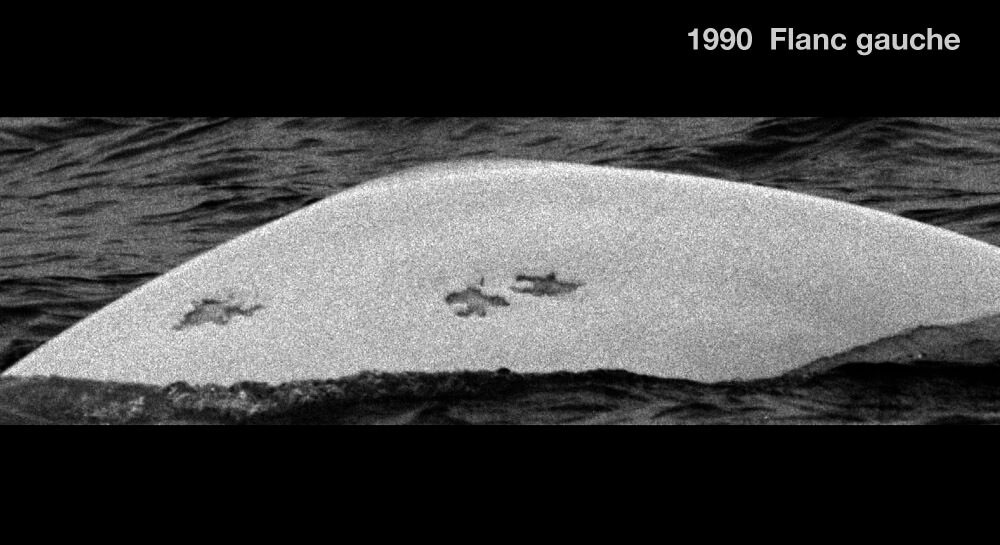Daisy
Beluga


Adopted by Frank Stockinger
-
ID number
DL0091
-
Sex
Unknown
-
Year of birth
Before 1977
-
Known Since
1989
Distinctive traits
DL0091’s name, Daisy, comes from the resemblance of its three scars on its left flank to daisies. There are no markings on its dorsal crest or right flank to identify it on that side.
Life history
When we first met Daisy in 1989, it was completely white. it would have been born before 1977.
For the moment, based on Daisy’s frequent visits and habits, we can’t confirm its sex or its summer range. Adult belugas are highly sex-segregated in summer. Males and females show clearly marked preferences, both in their associations and in the areas they frequent.
Daisy was already an adult when we first met it in 1989. The history of dozens of belugas we’ve followed tells us that the transition to white occurs at around 12 to 16 years of age. As for sexual maturity, females reach it between 8 and 14 and males between 16 and 18. Mating takes place between April and June; gestation lasts 12 to 15 months; whelping takes place from June to September and nursing lasts 20 to 30 months.
Observations history in the Estuary
Years in which the animal was not observed Years in which the animal was observed
Latest news
On June 18, 2001, we spotted Daisy in a herd of some thirty individuals off the Kamouraska municipality. The herd is essentially made up of white and gray individuals, i.e. adults and juveniles. This herd represents a challenge for the team, as the animals make long dives and it’s difficult to get close to them to take photos for our photo-identification research program. In addition, we try to biopsy two animals, which allows us to reveal genetic secrets and pollutants accumulated in the tissues, but the animals won’t let us get close. We decide to head for the center of the herd, where we find the majority of individuals. Once there, they quickly disperse. It’s not easy to collect data on this herd, but it’s a fact of life that has to be taken into account when studying animals in their natural environment.
Was this Daisy’s last sighting? We haven’t seen it for fifteen years. Is it dead? Has it remained invisible to the researcher’s eye all this time? One thing is certain, its story remains a valuable source of information for our knowledge of this fragile population.
Sponsor
Frank Stockinger adopted Daisy (1993).


